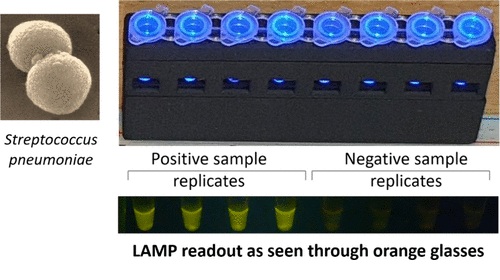Two-Minute COVID-19 Test Uses Nanosensor Technology to Detect Presence of SARS-CoV-2 Infection in Blood at POC
|
By LabMedica International staff writers Posted on 16 Jul 2021 |
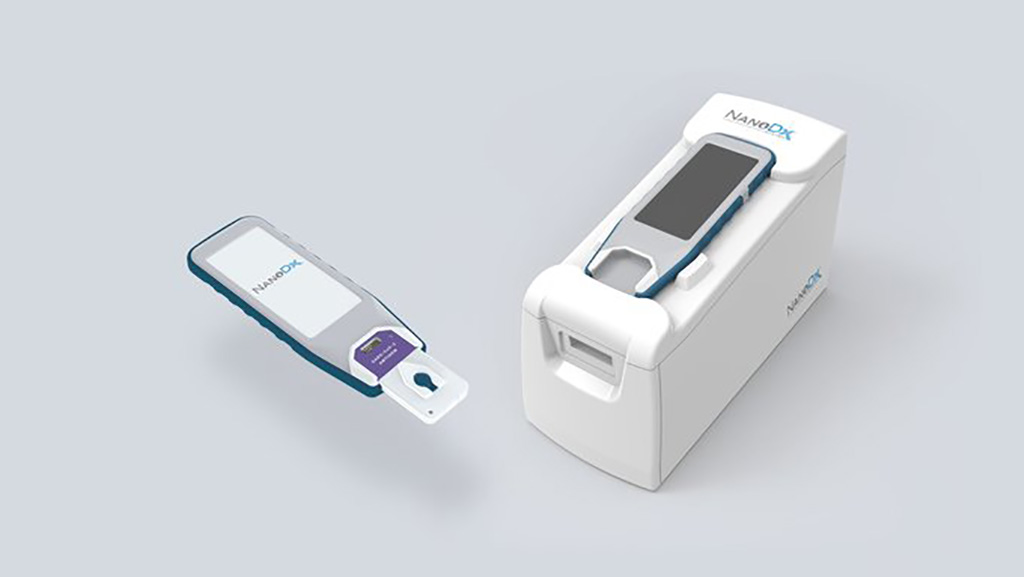
Image: Two-Minute COVID-19 Test Uses Nanosensor Technology to Detect Presence of SARS-CoV-2 Infection in Blood at POC (Photo courtesy of NanoDx, Inc.)
A SARS-CoV-2 testing system addresses existing diagnostic challenges by providing a rapid assessment from a nasal, throat, saliva, or finger stick of blood sample in a two minute test.
The simple, low-cost system that includes a portable handheld, analyzer, disposable cartridges and secure software for seamless systems integration has been developed by NanoDx, Inc. (Boston, MA, USA). NanoDx is licensing IBM Research’s (Yorktown Heights, NY, USA) nanoscale sensor technology for use in its diagnostic platform. IBM’s technology was developed with the goal of advancing sensor metal-oxide semi-conductive (CMOS) technology.
NanoDx plans to use this sensor technology for diagnostic platforms designed to provide rapid, accurate and inexpensive detection of different diseases. NanoDx also plans to use this technology to advance efforts to diagnose a variety of medical conditions rapidly and accurately, including COVID-19, different forms of influenza, traumatic brain injury (TBI), sepsis and stroke in the field of in vitro diagnostics, as well as biosensors. The IBM-designed nano biosensors are CMOS-compatible, which means they may be more cost-effectively and rapidly manufactured in high-volume. When integrated with automation circuitry, these tiny sensors may enable NanoDx’s real-time, point-of-care diagnostics technology to detect and quantify biomarkers from small fluid specimens in less than two minutes.
NanoDx is commercializing its real-time, point-of-care diagnostics platform and has built an extensive intellectual property portfolio around its nanosensor design and manufacturing processes that encompasses the entire field of in vitro diagnostics. The NanoDx System for SARS-CoV-2 is pursuing FDA Emergency Use Authorization to expand rapid COVID-19 testing.
"The field of diagnostics has changed rapidly during the past year with the emergence of COVID-19," said Sharad Joshi, President and Chief Executive Officer of NanoDx. "This global pandemic has further highlighted the need for a convenient, fast and accurate diagnostic so proper treatments can be delivered to patients as quickly as possible with the goal of shortening recovery times. As we move forward, our access to IBM's technology in the in vitro diagnostics and biosensor fields will enable us to pursue developing a high throughput diagnostics platform at a significantly lower cost."
"Our work with NanoDx is another example of IBM's collaborative approach to what we call 'hard tech': solving the deep technical problems that affect our everyday lives," said Mukesh Khare, Vice President, Hybrid Cloud Research at IBM Research. "Notably, this CMOS-compatible device can be manufactured in an existing foundry, providing easily scalable and cost-effective hardware. The integration of this technology design with NanoDx's highly-advanced nanosensor platform can help accelerate the ability to bring an extensive array of diagnostic solutions to market."
Related Links:
NanoDx, Inc.
IBM Research
The simple, low-cost system that includes a portable handheld, analyzer, disposable cartridges and secure software for seamless systems integration has been developed by NanoDx, Inc. (Boston, MA, USA). NanoDx is licensing IBM Research’s (Yorktown Heights, NY, USA) nanoscale sensor technology for use in its diagnostic platform. IBM’s technology was developed with the goal of advancing sensor metal-oxide semi-conductive (CMOS) technology.
NanoDx plans to use this sensor technology for diagnostic platforms designed to provide rapid, accurate and inexpensive detection of different diseases. NanoDx also plans to use this technology to advance efforts to diagnose a variety of medical conditions rapidly and accurately, including COVID-19, different forms of influenza, traumatic brain injury (TBI), sepsis and stroke in the field of in vitro diagnostics, as well as biosensors. The IBM-designed nano biosensors are CMOS-compatible, which means they may be more cost-effectively and rapidly manufactured in high-volume. When integrated with automation circuitry, these tiny sensors may enable NanoDx’s real-time, point-of-care diagnostics technology to detect and quantify biomarkers from small fluid specimens in less than two minutes.
NanoDx is commercializing its real-time, point-of-care diagnostics platform and has built an extensive intellectual property portfolio around its nanosensor design and manufacturing processes that encompasses the entire field of in vitro diagnostics. The NanoDx System for SARS-CoV-2 is pursuing FDA Emergency Use Authorization to expand rapid COVID-19 testing.
"The field of diagnostics has changed rapidly during the past year with the emergence of COVID-19," said Sharad Joshi, President and Chief Executive Officer of NanoDx. "This global pandemic has further highlighted the need for a convenient, fast and accurate diagnostic so proper treatments can be delivered to patients as quickly as possible with the goal of shortening recovery times. As we move forward, our access to IBM's technology in the in vitro diagnostics and biosensor fields will enable us to pursue developing a high throughput diagnostics platform at a significantly lower cost."
"Our work with NanoDx is another example of IBM's collaborative approach to what we call 'hard tech': solving the deep technical problems that affect our everyday lives," said Mukesh Khare, Vice President, Hybrid Cloud Research at IBM Research. "Notably, this CMOS-compatible device can be manufactured in an existing foundry, providing easily scalable and cost-effective hardware. The integration of this technology design with NanoDx's highly-advanced nanosensor platform can help accelerate the ability to bring an extensive array of diagnostic solutions to market."
Related Links:
NanoDx, Inc.
IBM Research
Latest COVID-19 News
- New Immunosensor Paves Way to Rapid POC Testing for COVID-19 and Emerging Infectious Diseases
- Long COVID Etiologies Found in Acute Infection Blood Samples
- Novel Device Detects COVID-19 Antibodies in Five Minutes
- CRISPR-Powered COVID-19 Test Detects SARS-CoV-2 in 30 Minutes Using Gene Scissors
- Gut Microbiome Dysbiosis Linked to COVID-19
- Novel SARS CoV-2 Rapid Antigen Test Validated for Diagnostic Accuracy
- New COVID + Flu + R.S.V. Test to Help Prepare for `Tripledemic`
- AI Takes Guesswork Out Of Lateral Flow Testing
- Fastest Ever SARS-CoV-2 Antigen Test Designed for Non-Invasive COVID-19 Testing in Any Setting
- Rapid Antigen Tests Detect Omicron, Delta SARS-CoV-2 Variants
- Health Care Professionals Showed Increased Interest in POC Technologies During Pandemic, Finds Study
- Set Up Reserve Lab Capacity Now for Faster Response to Next Pandemic, Say Researchers
- Blood Test Performed During Initial Infection Predicts Long COVID Risk
- Low-Cost COVID-19 Testing Platform Combines Sensitivity of PCR and Speed of Antigen Tests
- Finger-Prick Blood Test Identifies Immunity to COVID-19
- Quick Test Kit Determines Immunity Against COVID-19 and Its Variants
Channels
Clinical Chemistry
view channel
VOCs Show Promise for Early Multi-Cancer Detection
Early cancer detection is critical to improving survival rates, but most current screening methods focus on individual cancer types and often involve invasive procedures. This makes it difficult to identify... Read more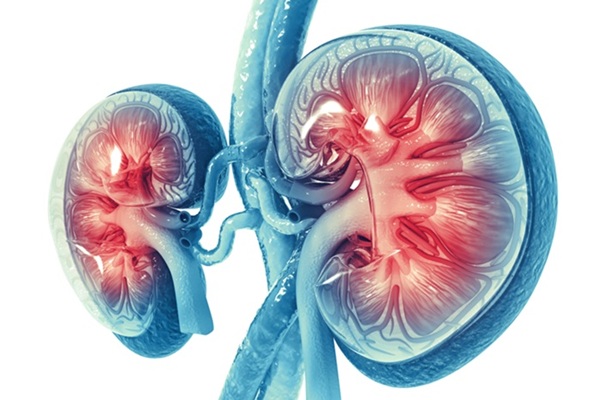
Portable Raman Spectroscopy Offers Cost-Effective Kidney Disease Diagnosis at POC
Kidney disease is typically diagnosed through blood or urine tests, often when patients present with symptoms such as blood in urine, shortness of breath, or weight loss. While these tests are common,... Read moreMolecular Diagnostics
view channel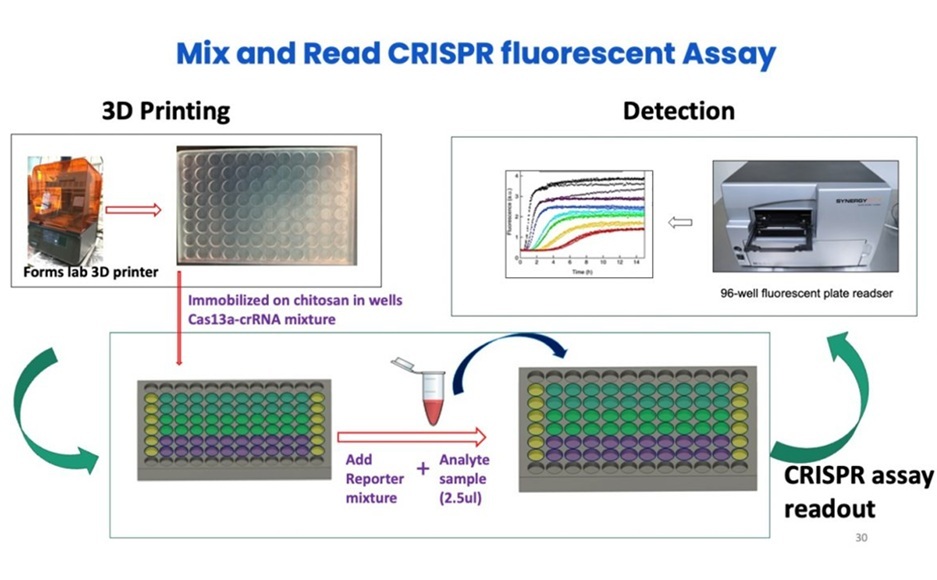
Fast Low-Cost Alzheimer’s Tests Could Detect Disease in Early and Silent Stages
Early diagnosis remains one of the greatest challenges in combating Alzheimer’s disease, the most common cause of age-related dementia. With symptoms like memory loss and confusion typically appearing... Read more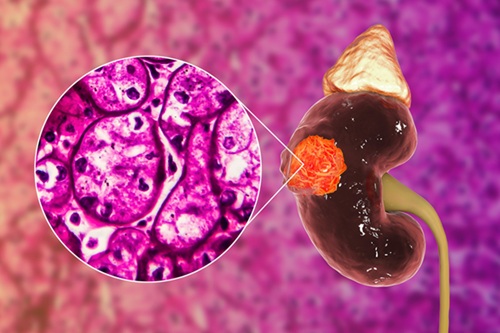
Further Investigation of FISH-Negative Tests for Renal Cell Carcinoma Improves Diagnostic Accuracy
Accurate diagnosis of renal cell carcinoma (RCC) is critical to determining the right therapy, but standard diagnostic methods can sometimes miss important genetic alterations. Now, researchers have discovered... Read more
First Direct Measurement of Dementia-Linked Proteins to Enable Early Alzheimer’s Detection
The disease process in Alzheimer’s begins long before memory loss or cognitive decline becomes apparent. During this silent phase, misfolded proteins gradually form amyloid fibrils, which accumulate in... Read moreHematology
view channel
ADLM’s New Coagulation Testing Guidance to Improve Care for Patients on Blood Thinners
Direct oral anticoagulants (DOACs) are one of the most common types of blood thinners. Patients take them to prevent a host of complications that could arise from blood clotting, including stroke, deep... Read more
Viscoelastic Testing Could Improve Treatment of Maternal Hemorrhage
Postpartum hemorrhage, severe bleeding after childbirth, remains one of the leading causes of maternal mortality worldwide, yet many of these deaths are preventable. Standard care can be hindered by delays... Read more
Pioneering Model Measures Radiation Exposure in Blood for Precise Cancer Treatments
Scientists have long focused on protecting organs near tumors during radiotherapy, but blood — a vital, circulating tissue — has largely been excluded from dose calculations. Each blood cell passing through... Read moreImmunology
view channel
Chip Captures Cancer Cells from Blood to Help Select Right Breast Cancer Treatment
Ductal carcinoma in situ (DCIS) accounts for about a quarter of all breast cancer cases and generally carries a good prognosis. This non-invasive form of the disease may or may not become life-threatening.... Read more
Blood-Based Liquid Biopsy Model Analyzes Immunotherapy Effectiveness
Immunotherapy has revolutionized cancer care by harnessing the immune system to fight tumors, yet predicting who will benefit remains a major challenge. Many patients undergo costly and taxing treatment... Read moreMicrobiology
view channel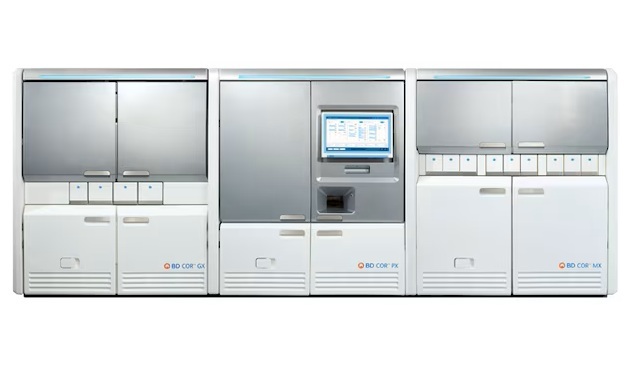
High-Throughput Enteric Panels Detect Multiple GI Bacterial Infections from Single Stool Swab Sample
Gastrointestinal (GI) infections are among the most common causes of illness worldwide, leading to over 1.7 million deaths annually and placing a heavy burden on healthcare systems. Conventional diagnostic... Read more
Fast Noninvasive Bedside Test Uses Sugar Fingerprint to Detect Fungal Infections
Candida bloodstream infections are a growing global health threat, causing an estimated 6 million cases and 3.8 million deaths annually. Hospitals are particularly vulnerable, as weakened patients after... Read morePathology
view channel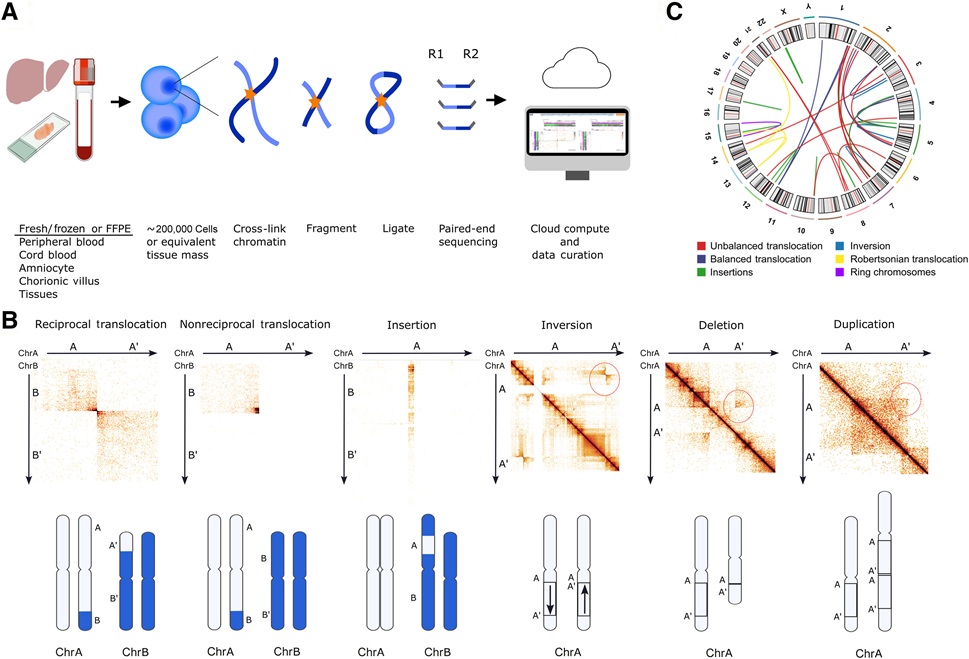
3D Genome Mapping Tool to Improve Diagnosis and Treatment of Genetic Diseases
Standard laboratory tests often fail to detect complex DNA rearrangements that underlie many genetic diseases. To bridge this diagnostic gap, researchers have developed a 3D chromosome mapping method that... Read more
New Molecular Analysis Tool to Improve Disease Diagnosis
Accurately distinguishing between similar biomolecules such as proteins is vital for biomedical research and diagnostics, yet existing analytical tools often fail to detect subtle structural or compositional... Read more
Tears Offer Noninvasive Alternative for Diagnosing Neurodegenerative Diseases
Diagnosing and monitoring eye and neurodegenerative diseases often requires invasive procedures to access ocular fluids. Ocular fluids like aqueous humor and vitreous humor contain valuable molecular information... Read moreTechnology
view channel
Portable Biosensor Diagnoses Psychiatric Disorders Using Saliva Samples
Early diagnosis of psychiatric disorders such as depression, schizophrenia, and bipolar disorder remains one of medicine’s most pressing challenges. Current diagnostic methods rely heavily on clinical... Read more
Cell-Sorting Device Uses Electromagnetic Levitation to Precisely Direct Cell Movement
Sorting different cell types—such as cancerous versus healthy or live versus dead cells—is a critical task in biology and medicine. However, conventional methods often require labeling, chemical exposure,... Read moreIndustry
view channel
Qiagen Acquires Single-Cell Omics Firm Parse Biosciences
QIAGEN (Venlo, Netherlands) has entered into a definitive agreement to fully acquire Parse Biosciences (Seattle, WA, USA), a provider of scalable, instrument-free solutions for single-cell research.... Read more
Puritan Medical Products Showcasing Innovation at AMP2025 in Boston
Puritan Medical Products (Guilford, ME, USA), the world’s most trusted manufacturer of swabs and specimen collection devices, is set to exhibit at AMP2025 in Boston, Massachusetts, from November 11–15.... Read more
Advanced Instruments Merged Under Nova Biomedical Name
Advanced Instruments (Norwood, MA, USA) and Nova Biomedical (Waltham, MA, USA) are now officially doing business under a single, unified brand. This transformation is expected to deliver greater value... Read more














